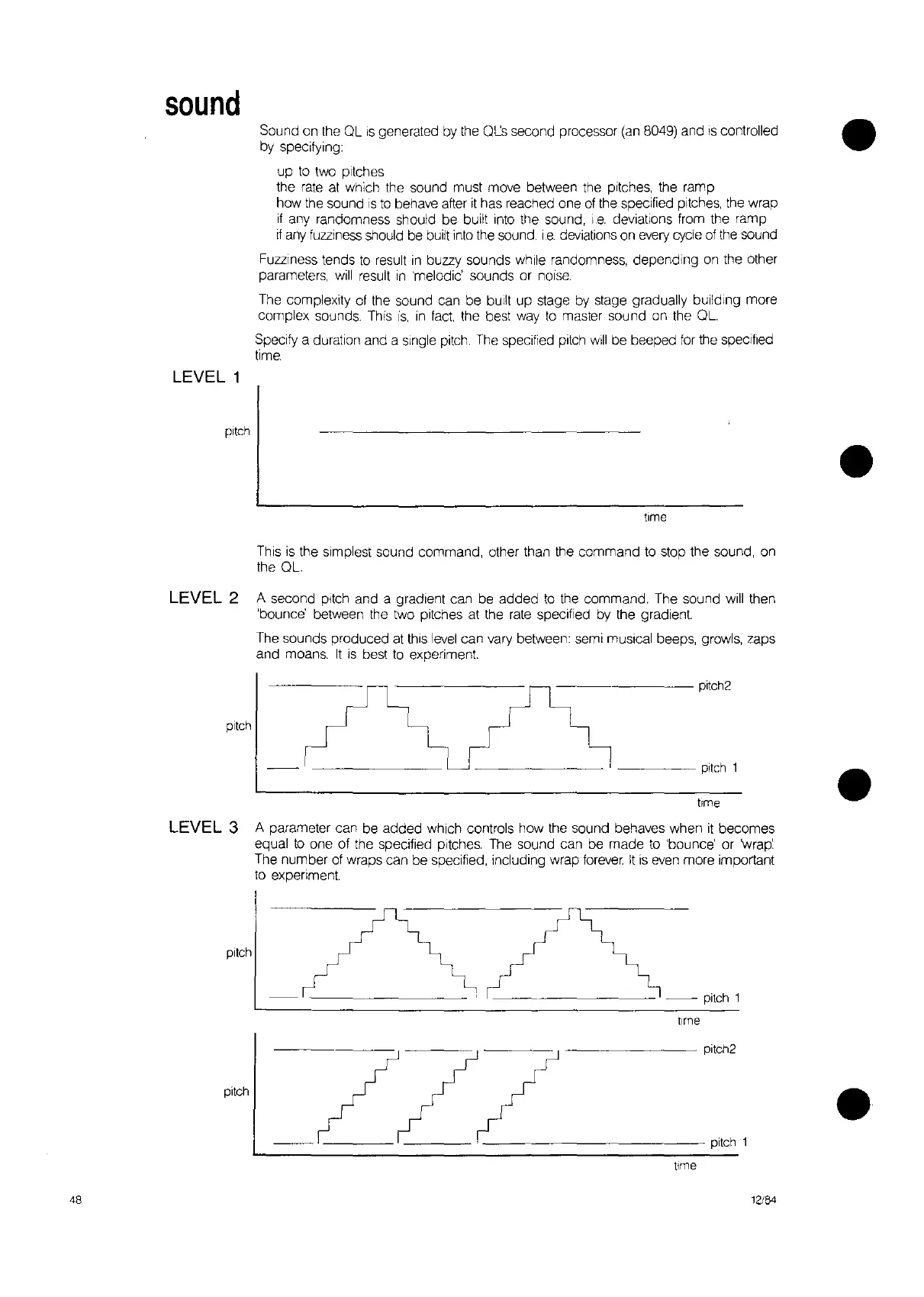sound
Sound
on
the
OL
IS
generated
by
the
Ot..:s
second processor
(an
8049) and
IS
controlled
by
specifying:
up
to
two
pitches
the
rate
at
which the sound must move between the pitches, the ramp
how the sound
is
to
behave
after
it
has reached one
of
the specified pitches, the wrap
If
any
randomness should
be
built
Into
the sound,
Ie.
deviations from the ramp
If
any
fuzziness
should
be
built
into
the sound.
ie.
deviations
on
every
cycle
of
the
sound
Fuzziness tends
to
result
in
buzzy sounds while randomness, depending
on
the other
parameters,
will
result
in
'melodic' sounds or
nOise.
The
complexity
of
the sound can be built up stage
by
stage gradually bUilding more
complex sounds. This
is,
In
fact the best
way
to
master sound
on
the OL.
Specify a duration and a single
pitch.
The
specified
pitch
will
be
beeped
for
the
speCified
time.
LEVEL 1
pitch
This
is
the simplest sound command, other than the command
to
stop the sound, on
the
OL
LEVEL 2 A second pitch and a gradient can
be
added
to
the command. The sound
will
then
'bounce' between the two pitches
at
the
rate
specified
by
the gradient
The sounds produced
at
this
level
can vary between: semi musical beeps, growls, zaps
and moans.
It
is
best
to
experiment
-fl-L~-----Pltch2
pitch
--~V~-----Pitch
1
time
LEVEL 3 A parameter can
be
added which controls how the sound behaves when
it
becomes
equal
to
one of the specified pitches.
The
sound can
be
made
to
'bounce' or
Wrap:
The
number
of
wraps can be specified, including wrap
forever.
It
is
even
more important
to
experiment.
•
•
•
pitch
--
pitch
1
pitch
1
48
pitch
--------
pltch2
_777'
12/84
•
